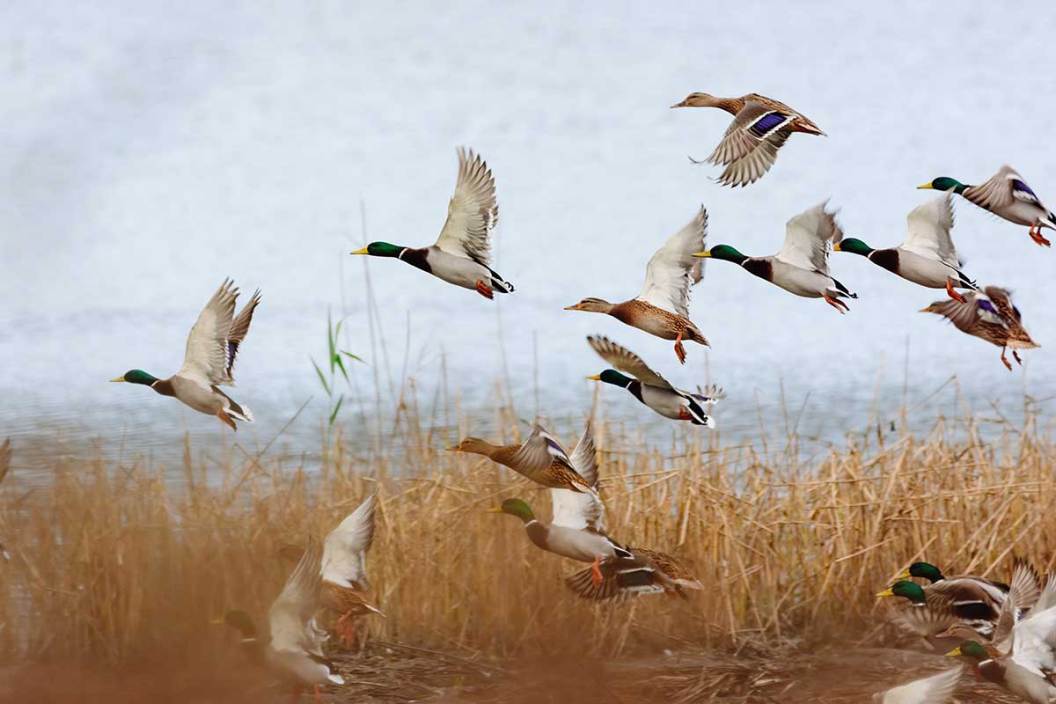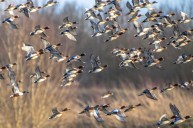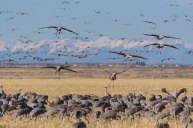Across the United States there are a total of 41 waterfowl species that include ducks, geese, tundra swans, and even sandhill cranes. There are several flyways across this nation where these birds can be found and hunted throughout their autumn migratory routes. Hunt and harvest each one of them over a lifetime, and you've accomplished the North American Waterfowl Grand Slam. WaterfowlersChallenge.com is home to all the information needed, plus registration instructions, so you can earn recognition for your waterfowl hunting accomplishments. Achieving this unique Grand Slam isn't an easy feat, nor can it be completed in a single season, but is one of the most rewarding adventures a hunter can commit themselves to. There are ways to reduce timelines and be strategic while working towards this goal, but for the most part you should plan on hunting for a while to collect these birds. I've made it a personal goal of mine, and in my decade-plus I still haven't completed it. The drive and determination required is a lot to ask of an individual hunter, but chasing a Grand Slam like this is a great way to stay motivated, see different parts of our continent, and really drive home the idea of hunting as conservation. The more I strive for the Grand Slam, the more dollars I'm putting into each wildlife agency, and the more I personally care about these particular subspecies, even if they don't reside or travel through my home area. Simply put, I'm having a blast going after this achievement, and I'm a better hunter and wildlife steward as a result.
For your own reference, and in case you want to start checking off boxes for each new duck or goose you harvest, here are the species that make up the North American Waterfowl Grand Slam.
Puddle Ducks
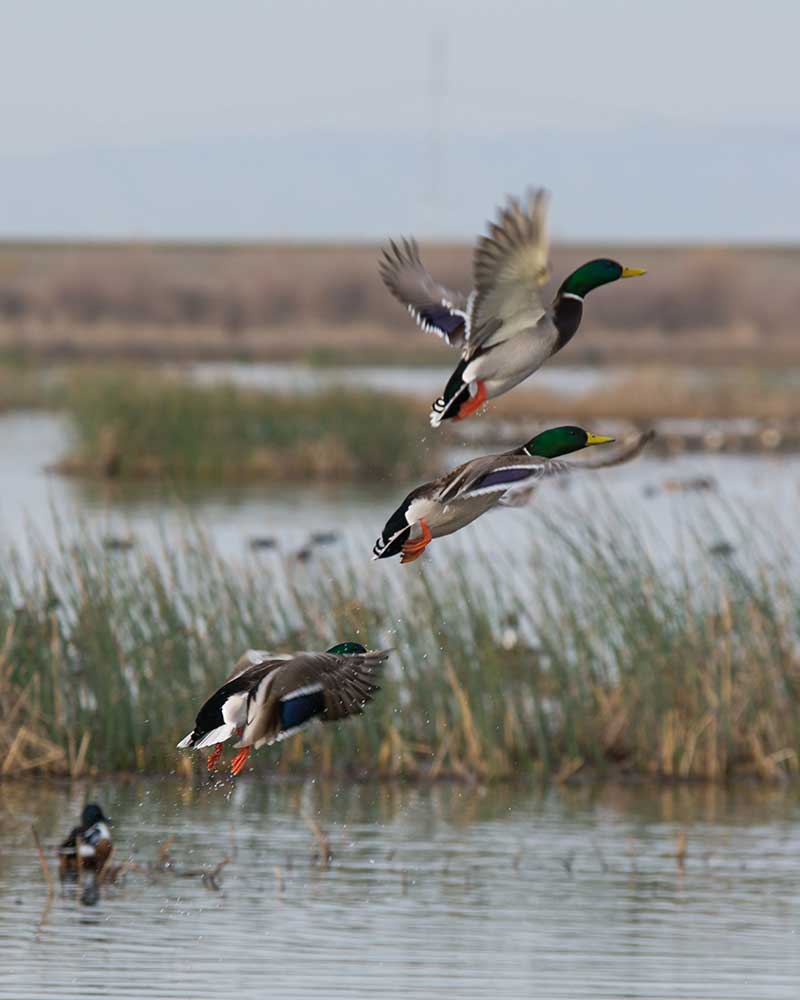
fusaromike/Getty
Puddle ducks are generally found in flooded agricultural fields, flooded timber, and swamps along river bottoms. Their whereabouts are often influenced by the fact that these birds prefer to feed at the water's surface. Although abundant in other migratory bird flyways, the Mississippi Flyway is where the vast majority of these ducks are hunted. It follows the Mississippi River (hence the name) through the central region of the United States from Canada to Mexico. In fact, this area is the most heavily-hunted per capita, thanks to the rich waterfowl history along the Mississippi Delta region. If you're a waterfowler going after the Grand Slam, hunting here would be en excellent option for accomplishing several species. Almost all puddle duck species can be found somewhere in the Mississippi Delta, except for the Black-Bellied Whistling Duck, Fulvous, and Mottled Duck (these are found further south). For example, Florida is among the best states to harvest all three of these. However they are found more abundantly in the far south regions of the state.
1. Mallard
2. American Wigeon
4. Gadwall
5. Cinnamon Teal
6. Green-Winged Teal
7. Blue-Winged Teal
8. Wood Duck
9. Northern Shoveler
10. American Black Duck
11. Mottled Duck
12. Black-Bellied Whistling Duck
13. Fulvous Whistling Duck
Diver Ducks
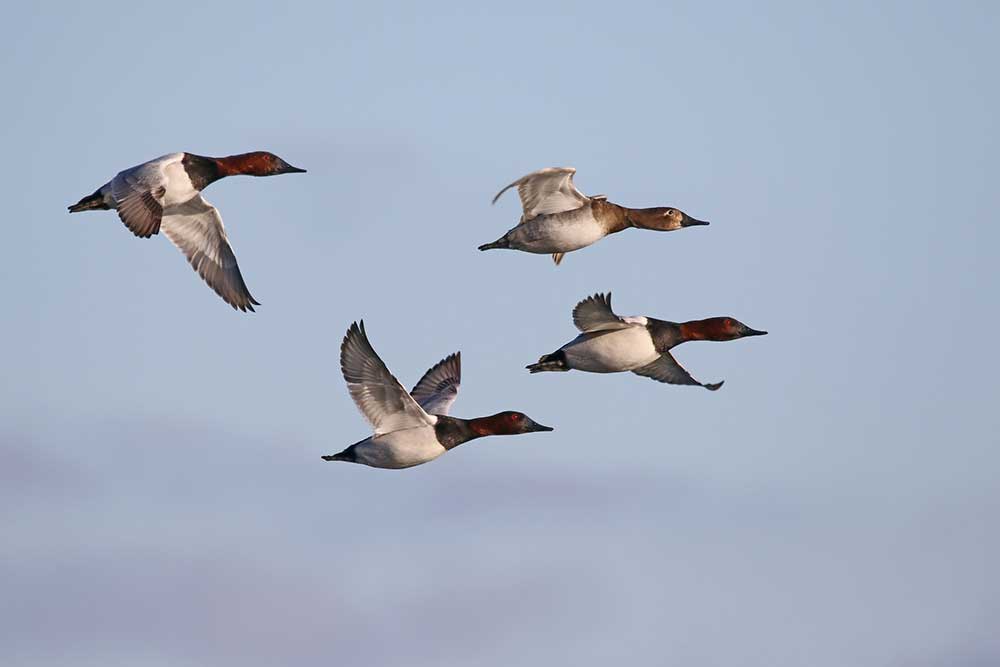
photosbyjimn/Getty
Diver ducks like deeper bodies of freshwater as well as saltwater. As their name suggests, they dive to the bottom to feed, utilizing their strong webbed feet to stay in place while eating and searching for food. Their diets can consist of seeds, vegetation, small aquatic insects, and other subsurface foods. Diver ducks are typically found in large river systems in the Mississippi and Atlantic Flyways, and particularly near the Tennessee River Basin. You can also find them along the Eastern U.S. coastline. Canvasbacks and other diver species were often harvested commercially for consumption at high end restaurants, which means they make especially good table fare. Thankfully, commercial harvesting was officially banned long ago, and regulations limit the total birds a hunter can take from season to season. For the best results and most bang for your buck when pursuing a Grand Slam, locate freshwater areas in the southeastern region to maximize the species potential. The Greater Scaup is more abundantly found in the northeastern region, and the Barrow's Goldeneye is more predominately found in the Pacific Flyway. Those may require special trips.
14. Canvasback
15. Redhead
16. Greater Scaup
17. Lesser Scaup
18. Common Goldeneye
19. Barrow's Goldeneye
20. Bufflehead
21. Ruddy Duck
22. Ring-Necked Duck
23. Common Merganser
24. Hooded Merganser
25. Red-Breasted Merganser
Sea Ducks
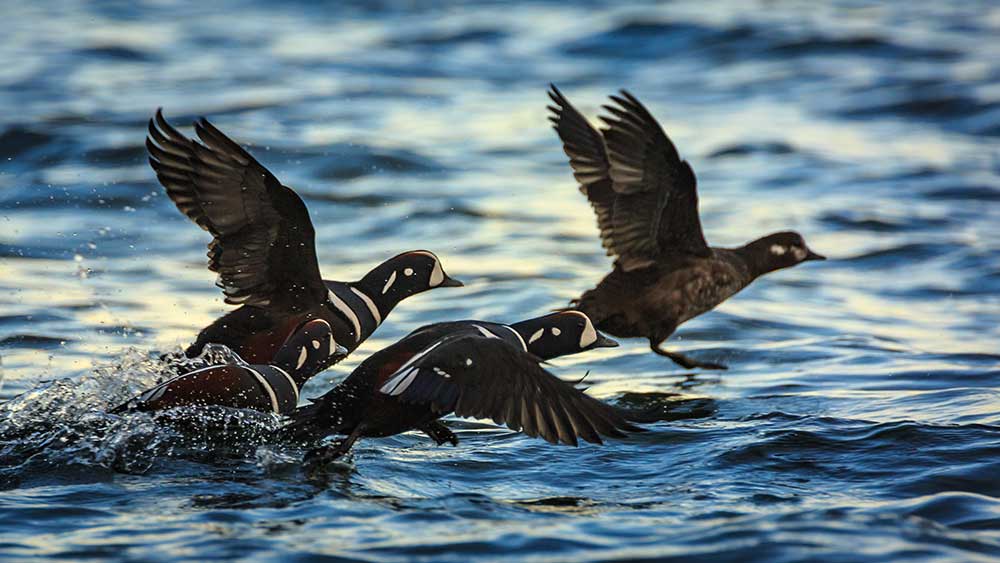
michaelschober/Getty
Sea ducks are exactly as the name describes: ocean dwellers. These species can be found in the Atlantic as well as the Pacific Flyways, most often right along the coast. Their diets are composed of mostly fish, clams, and other sea creatures. These birds have the ability to dive a couple hundred feet below the water's surface to feed. In fact, an Old Squaw has been documented as the deepest-diving duck on record. In my opinion, the species in this group are the most exciting to hunt. Keep in mind that hunting for Harlequins in New England is illegal, so the best option would be to hunt the Pacific Flyway to gather more species with one hunt. It's worth mentioning that the King Eider is in a league of its own. They are most populous in the Bering Sea in Alaska. Some sightings of the King Eider have been reported on the Eastern seaboard, but it's rare and they are usually not well-plumed.
26. King Eider
27. Common Eider
28. Old Squaw
29. Common Scoter
30. Surf Scoter
31. White-Winged Scoter
32. Harlequin Duck
Swans, Cranes, and Geese

Spondylolithesis/Getty
The Tundra Swan is a massive bird that looks like a bomber jet landing into a decoy spread. These birds can weigh up to 20 pounds and can stand three feet tall. Their diet consists of underwater plants, aquatic foliage, and the like. They are found in abundance in North Carolina, which is within the Atlantic Flyway, but Tundra Swans can also be found in other states. Check each state's regulations before planning to hunt, because most states don't have an open hunting season for this species. The "Ribeye of the Sky," also known as the sandhill crane, is what many call the best-tasting waterfowl species in North America. Sandhills are commonly found in all of the flyways within in the United States, but not all states allow sandhill crane hunting. Their diet consists of grain (they love leftover row crop production), some insects, and at times small mammals or reptiles. When sandhill cranes are approaching a decoy spread or a field to eat, their call is very loud and travels a good distance. They're so loud that they can be several hundred yards away and still sound as if they are much closer. Keep in mind that these birds have a huge beak and can seriously injure (or even kill) a hunting dog if you're employing your four-legged friend's help to retrieve them.
33. Tundra Swan
34. Sandhill Crane
35. Canada goose
36. Cackling Goose
37. Blue Goose
38. Snow Goose
39. Greater White-Fronted Goose
40. Ross's Goose
41. Brant Goose
Snow geese, blue geese, and Ross's geese are the most abundant of all waterfowl species. The numbers of these birds have become so large that special "Conservation Seasons" have been put in place to aid in population control. These hunting seasons have some specific regulation changes that help hunters deliver more shots down range. Non-toxic shot and other migratory bird hunting regulations still apply, but there isn't a limit and the use of extended magazines is permitted. There is a dense population that resides along the Mississippi Flyway, but these geese can also be found in the Pacific Flyway.
The Brant goose is a coastal bird found in the Pacific and Atlantic Flyway. Their diet consists of grasses but during the migration, eel grass is at the top of their list. They will also eat small insects. One of the best habitats for harvesting Brants is on coastal sand or mud flats, followed closely by protected bays. The Brant is the species found furthest north during the breeding season.
There are several subspecies of geese and ducks that are not listed in the official Grand Slam but count as bonus birds. Hybrids fall into this category as well.
